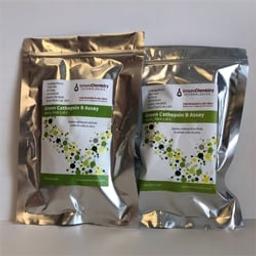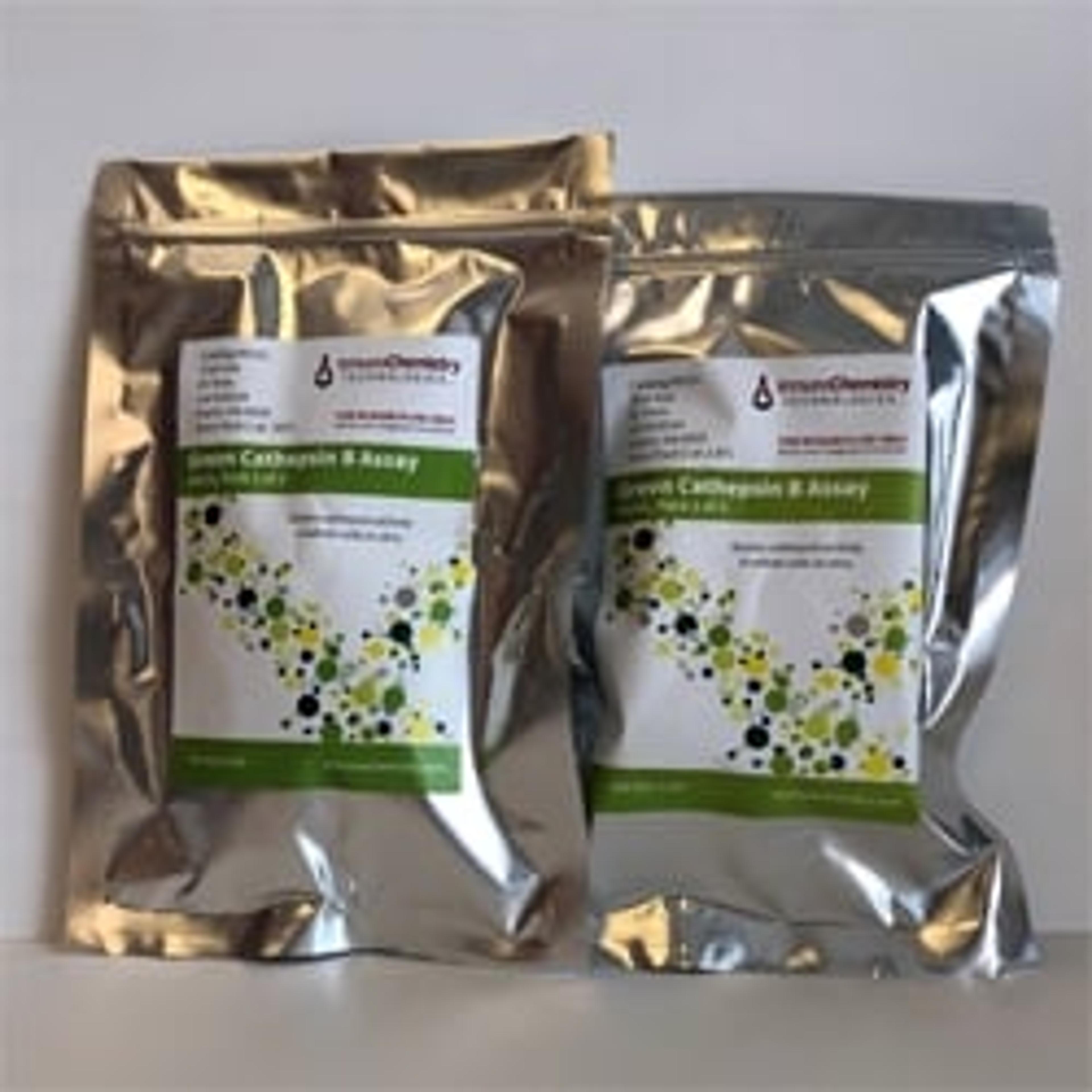Green Cathepsin B Assay
ICT’s Green Cathepsin B Assay allows researchers to detect and monitor intracellular cathepsin activity over time in vitro using live whole cells. This in vitro assay employs the quenched substrate Rhodamine 110-(RR)2, which fluoresces green upon cleavage by active cathepsin enzymes. Analyze samples using flow cytometry or fluorescence microscopy.

The supplier does not provide quotations for this product through SelectScience. You can search for similar products in our Product Directory.
Very effective instrument
Europe and America
This product is good and easy to use. It also give high quality results
Review Date: 14 Mar 2019 | Immunochemistry Technologies LLC
Perfect product, I recommend this for other scientists.
Daily use
An important tool for studying enzyme kinetics and screening small molecular inhibitors used for discovering drugs. The Green Cathepsin B Assay permits scientists to discover and keep under surveillance intracellular cathepsin activity over some period in vitro with the use of whole live cells. This instrument is easy and straightforward, one can adapt it to a 96-well plate assays.
Review Date: 14 Mar 2019 | Immunochemistry Technologies LLC
This product is specially designed for the experimental studies.
To enquiry the activities to of cathespian inside the cell
Yes I recommend it to others because it is easy to use .. And it can also use to check the activity and different reactions carried out during the whole process.
Review Date: 14 Mar 2019 | Immunochemistry Technologies LLC
Good quality product. Like it.
Used once a day
Very effective for immune system. High quality product. Easy to use and useful for anyone.
Review Date: 18 Feb 2019 | Immunochemistry Technologies LLC
Cathepsins are a group of protease enzymes typically found in the lysosome. Cathepsin B plays important roles in many cellular functions (like intracellular protein degradation, antigen processing, etc.). Elevated cathepsin activity is associated with many disease states such as cancer, Alzheimer’s disease, and so on.
The Green Cathepsin B Assay contains Rhodamine 110 Cathepsin B Substrate, which is a non-cytotoxic and cell membrane permeant substrate that fluoresces green upon cleavage by active cathepsins. To use Rhodamine 110-(RR)2, add the substrate directly to the cell culture medium, incubate, and analyze. Because the substrate is cell permeant, it easily penetrates the cell membrane and the membranes of the internal cellular organelles – no lysis or permeabilization steps are required. If active cathepsin enzymes are present, the quenched Rhodamine 110-(RR)2 substrate is cleaved, resulting in an increase in green fluorescence signal. Samples can be analyzed by flow cytometry or fluorescence microscopy. Hoechst 33342 is included in the kit to label nuclei.



















